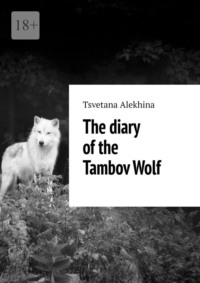
Полная версия
Choosing religion you choose fate
Whence the expression seventh heaven exists. In a bird’s egg, the outer layers are films and shells. The world egg has them too. This is the nine heavens. The first sky is for the sun. The second is for the month. The third is for the stars, the fourth is for the dawn, the fifth is for the clouds, the sixth is for the winds. The seventh most important thing is the «firmament», the bottom of the celestial ocean. Waves are lapping on it. When it starts to rain, the seventh heaven diverges and passes life-giving streams of water to the earth. Little is known about the eighth and ninth heaven; perhaps this is a place for space and other worlds.
In any case, it is clear to us that the planet Earth, the cosmos and a star named the Sun already existed before the creation of the world and the birth of life on Earth. The sun is the most important God of the pagans. The sun has been worshipped from time immemorial, in different religions. Slavs glorified the sun, met spring – Maslenitsa. The sun was considered the fiery god Yarilo, because it exuded ardent rays. The ancient Egyptians had a god Omon Ra, Ra means light. The sun is light, it is heat, and it is life. There are many words in which the sound of ra sounds – joy, rainbow, reason.
Scientists also pay great attention to the sun. Our civilization exists not only because of the unique physical and climatic conditions that are present on planet Earth. In many ways, this unique balance, the very physical existence of earthly life is due to the existence of the Sun – our main luminary. Light and heat are the basis of our life. We know a lot about our star. Even the ancient Slavs paid close attention to the Sun. In addition to the divine essence, which was attributed to the Sun, he was assigned the function of determining the chronology. Solar calendars were invented in ancient Egypt; the Indians of North America used the services of the luminary, composing their calendar. Even modern civilization lives according to the chronology, developed taking into account the movement of the central luminary of the Solar system.
Where did the sun come from? In Christianity, God created him. In paganism, it is God. Scientists think differently. The solar system is a system of planets, in the center of which there is a bright star, a source of energy, heat and light – the Sun. In one of the scientific versions, the Solar system was formed because of the explosion of one or more stars, about 4.5 billion years ago. The Sun star and the entire Solar System were formed due to a cloud of gas and dust particles that rotated in motion and, under the influence of their mass, formed a disk in which the entire Solar System originated.
Nevertheless, life on the planet appeared thanks to solar heat. All living things, including people, began to be born on Earth.
To this day, several chronicles and folk legends have survived that the Slavs revered the sun. The oldest of them belongs to the tenth-century Arab writer Al-Masudi. In his work «Golden Meadows», describing Slavic temples, he notices that in one of them holes were made in the dome to observe the points of sunrise, and that precious stones with inscriptions that predicted the future were inserted there. Another Arab writer is Ibrahim Ben-Vesif Shah in his writings writes that the sun was revered by the Slavs, and also that there was one of the Slavic peoples who liked to celebrate one of the seven holidays, the day of the Sun. Seven holidays were named after the constellations, and the feast of the Sun was the most revered. Every family had to have an image of the Sun, because the Sun was considered the protector of orphans and the patron of family peace and happiness. They turned to the Sun with prayer not only in trouble or in illness, but also constantly, every day as the lord of everything. The sun was considered the grandfather or father of the Slavic people, this fact is emphasized by an old song that occurs with minor changes in the epic of all Slavic nationalities. After all, we have only one root!
«Sunshine, sunshine,
Look out the window!
Your children are crying,
Asking for food and drink.»
The meaning of these simple words has a deep meaning. After all, if the Slavic people are considered the grandson of the Sun and are under his special patronage, then an appeal to him with a request for drink and food can be interpreted as a request for spiritual food, without which no person on Earth can do.
The Slavs depicted the sun in the form of a rotifer. The meaning of the word kolovrat – kolo is a circle, the gate is a rotation. The sun is a circle that rotates. Initially, kolovrat had four rays, which meant four continents. Then there were six rays, which meant the patronage of God, whose name is Perun. The eight-ray rotifer means the light of the Sun, as well as the heavenly Fire.
Both men and women can wear Kolovrat as a talisman. Men should wear a charm so that the rays are located clockwise. This talisman protects against evil forces, gives self-confidence and gives masculinity.
Women should wear this amulet counterclockwise. Thanks to him, the fair sex found happiness and love. Every Slav knew that an expectant mother should wear such a talisman during pregnancy. This amulet gave a woman protection from evil forces, helped to give birth to a healthy child and facilitated childbirth.
What is a swastika? The swastika is the oldest sign. The first mention of the swastika appeared in the eighth millennium BC. The word «swastika» itself originated in India, such an ancient symbol itself did not appear in India. The word consists of two Sanskrit roots: su – «good, good» and asti – «is, be», that is, «welfare» or «well-being. Currently, the value of this symbol is still great. Various authors associate the swastika with flowing water, air, flame, fire, the female sex, the union of the two sexes, the moon, the cardinal directions, various gods, etc. The most common version is the sun in circular motion.
If we believe the data from the time of 2 thousand BC, then the sun was represented in the form of a bird. In the monuments of India, the swastika symbolizes the sun, and in pre-Columbian America, the swastika was considered an emblem of the Sun god. In the Bronze Age, the image of a bird with a swastika on its chest, as well as a bird with a cross, was interpreted as a symbol of the solar deity. The swastika was introduced in the VII century, in China as a hieroglyph for the Sun. The swastika was considered not only as a solar sign, but also as a symbol fertility of the earth. The swastika was given importance as a symbol of the four main forces, the natural elements, the four cardinal directions centered on the axis. This is confirmed in medieval Muslim manuscripts, and has been preserved to our time by American Indians. In Western occultism, it was given great importance to zodiac rotations, the alchemical idea of the transformation of elements.
Swastika or Hitler’s star? The German swastika appeared in the early 20s of the last century. Unlike Slavic, it has the opposite meaning. According to one version, the German swastika carries the purity of Aryan blood. Hitler was firmly convinced that this symbol was dedicated to the victory of the Aryans over all other races.
Hitler himself claimed that he had put a symbol of the superiority of the Aryan race in the swastika, he himself wrote about this in a book called «My Struggle». In 1923, a congress was held, where Hitler managed to convince his colleagues that the black swastika on a white-red background was a symbol of the struggle against Jews and communists. The swastika was used paramilitary organizations long before the appearance of the Nazis in the political arena of Germany, as a symbol of nationalism. The soldiers of G. Erhardt’s detachment mainly wore this badge. The swastika became a prohibited sign; the distribution of the swastika was considered a criminal offense. This is indicated in paragraph 86a of the German Criminal Code. This happened in 1946, after the end of the Second World War.
The most significant difference between the Slavic swastika and the German one is the direction of its rotation. For the Fascists, it goes clockwise, and for the Slavs, it goes against it. In fact, these are not all the differences. The Aryan swastika differs from the Slavic one in the thickness of the lines and the background. The number of ends of the Slavic cross can be four or eight.
In Russia, Rosskomnadzor abolished the punishment for distributing swastikas on April 15, 2015.
In Slavic culture, the swastika denotes movement by the sun, and the other – against it. Movement on the sun means happiness, against it – misfortune. It is also interesting that the swastika that we used to see was a favorite symbol of Empress Catherine. She painted him wherever she lived.
The left-sided swastika is a counterclockwise rotation sign of purification, restoration. It also has the property of destruction – to build something light; you need to destroy the old and dark. Worshippers of this sign could wear their amulet with left-hand movements, this sign was called the «Heavenly Cross» and was a symbol of tribal unity and gave protection to the heavenly forces. The left—sided swastika was considered a sign of the autumn sun – collective.
The right-hand swastika rotates clockwise and denotes the beginning of all things – birth, development – it is a symbol of the power of the sun and the prosperity of the family, creative energy. This sign was also called Novorodnik or the Solar Cross. The sun sign and the swastika are equal in this case. It was believed that he gives the greatest power to the priests. Prophetic Oleg knew Ancient Wisdom, Ancient Vedas and wore this ancient sign on his shield. From these beliefs came the theories proving the ancient Slavic origin of the swastika.
Slavic amulets. The hope of protection from evil spirits was placed on the amulets – to protect them from evil, to take them away from their home, children and household. The swastika as a talisman is a sign that means the rotation of the Solar circle. At all times, the Slavs tried to protect themselves and their loved ones from evil, problems, slander, diseases and mental anxiety with the help of amulets. If we touch on history, the ancient Slavs worshiped the cult of the Sun, so Slavic amulets have always been with solar signs, the main task of which is to protect the person wearing them.
CHAPTER 3
Who are the Slavs, and where did this word come from. There are several meanings of this word. One of them is from the word praise. The Slavs glorified the sun, the gods. These people who glorify the world of Truth, perhaps is why they call us Orthodox. Christians have appropriated this word for themselves, and call themselves correctly glorifying their God. Perhaps that is why Christians call themselves Slavs. The next meaning of this word is glorious, glorious people. The compatibility of the suffix -yane is consonant with the names of the landscape (glade, drevlyane, kyane, buzhane). Perhaps this version has led many linguists to one of the understandings about the origin of the Slavs. In this case, it is possible that this is the name of one Slavic tribe, which later spread to all peoples (specific tribal ethnonyms for words – Slovaks, Slovenes, Slovenes, Ilmen Slovenes). There is a theory that it comes from the Slovutich River – the poetic name of the Dnieper; Sluya, Polish. The names of the rivers SawaAwa, SɫAwica, Serbian Slavnica. These words go back to the Indo-European root *leleu- meaning «to wash», «to purify». Everything also points to the Lithuanian village of Šlavėnai on the Šlavė River as the exact parallel name of «slovene», formed at the same time from the hydronym.
One of the versions says that the Slavs, Slovene, are people who speak «in words», that is, in our language, in their own language. For comparison, we can take a foreign-speaking tribe – the «dumb» ones. Of similar origin, the self-name of the Albanians is shqiptarët («speaking clearly»). In addition, the wordзыzyk («language») was used in the meaning of «people». The very essence of the meaning of «word», i.e. Slavs are people who have the gift of words, in comparison with other foreign-speaking peoples. According to the theory, this version was common among many peoples, – friend or foe. The author B.A. Rybakov interprets that the Slavs were related to the tribes of the Veneds are «sla» + «vienna», that is, the ambassadors of the Veneds. If we believe the historical data, then the first archaeological Slavic culture is the subclavian culture of the 5th – 2nd centuries BC. The area of distribution of this culture is southern Poland, the north of the Czech Republic and Slovakia, the southeast of Germany and the Carpathian region. This place is associated with the separation of the Slavic language from the Balto-Slavic language community. The Slavs bordered on the north with the Balts and Germans. On the east with the Iranian-speaking tribes of the Scythians and Sarmatians, on the south with the Illyrians and Thracians, on the west with the Celts.
According to another version, the self-name «Slavs» goes back to glory – these are «glorious», «famous people». These were the people in question, about whom the rumor speaks, about whom there is fame.
An equally popular theory tells that the «Slavs» originated from the name of the first community of the people, which gave this word spread to other territories in the process of emigration, especially during the Great Migration.
The Slavs migrated to Europe during the Great Migration of Peoples – this is an Indo-European people who were part of some ancient «Germanic-Slavic» community. The community of Slavs, having separated from the Germans, because, having found themselves on the border with wild Eastern peoples, lagged behind in their development, the flourishing Roman civilization became inaccessible to them at that time. This event served as a decline in the development of the community. Archaeology confirms the existence of strong cross-cultural ties between the Germans and the Slavs, and in general, the theory more than deserves respect if you remove the Aryan roots of the Slavs from it.
The first Slavic settlers on the territory of modern Ukraine and Russia were Drevlyans (inhabitants of forests) and Polyans (inhabitants of fields). It is known from the chronicles that at that time each family lived separately.
Little is known about the history of the origin of the Slavs, it is unanimously believed that they existed from 4—5 centuries. From unreliable information, it is known that before Europe, the Slavs lived in Egypt and Ethiopia, India and Palestine, Atlantis and the Arctic. Somewhere in the 1st millennium AD, the Slavs were divided into three groups: eastern, western and southern.
The Eastern Slavs adopted Orthodoxy. Eastern tribes are Russians, Ukrainians, and Belarusians. The Slavic Eastern branch included numerous tribes. The list of names of the tribes of Ancient Russia includes: Vyatichi, Bujan (Volynyan), Drevlian, Dregovich, Duleb, Krivichi, Polochan, Polyana, Radimichi, Slovenes, Tivertsev, Ulich, Croats, Bodrichi, Vislyan, Zlichan, Luzhichan, Lyutich, Pomoryan. After the adoption of Christianity, the Slavs did not willingly say goodbye to the gods. The adoption of Christianity was voluntary. Pagans were not burned at the stake; villages were not cut out, as the Crusader Catholics did with the Western Slavs and Lithuanians. Christianity and paganism existed peacefully and for quite a long time.
The Western Slavs are Pomorians, Obodrichs, Vagras, Polabs, Smolinians, Glinians, Lyutichs, Velets, Ratari, Drevans, Ruyans, Luzhichans, Czechs, Slovaks, Koshubians, Slovenes, Moravians, and Poles. Military actions on the part of the Germans forced them to leave their lands and retreat to the east.
The Southern Slavs adopted Christianity before anyone else because they lived close to Byzantium. The South Slavs included Slovenes, Croats, Serbs, Zahlumlans, and Bulgarians. These Slavic peoples settled the lands after predatory raids; they had to experience the strong influence of the Byzantine Empire. Later, some of them mixed with the Turkic-speaking Bulgarians, they gave rise to the Bulgarian kingdom, the predecessor of modern Bulgaria.
What the Slavs had in common was the similarity of the language and the cohesion of the association. The basis of the language was precisely the Gothic ethnosubtract. Linguistically, these are Lusatians, Poles, Litvins-Belarusians, Czechs, Slovaks, Macedonians, Croats, Slovenes, Bosnians, Montenegrins, Serbs, Bulgarians, Rusyns-Ukrainians and Russified Finno-Ugrians. Slavic languages belong to the Indo-European language family.
Slavic tribes began to develop new territories in the 6th-8th centuries. The tribes diverged in three main directions: the southern – the Balkan Peninsula, the western – between the Oder and the Elbe, to the east and northeast of Europe. Many Slavic tribes inhabited the eastern part of Russia. The Eastern Slavs remained on this land and gradually became the main inhabitants of the territory. In Russia, the ancient Slavic tribes were engaged in agriculture, beekeeping, fishing, and were also hunters and shepherds. The Slavs withstood the attacks of the Huns from Central Asia in the 3rd and 4th centuries, as well as the invasions of the Goths from Germany and Sweden. By about 600, the Slavs had become the dominant ethnic group on the Eastern European Plain. By the 7th century, they had established villages along all the major rivers of what is now eastern Russia. In the early middle Ages, the Slavs lived between the Viking kingdoms in Scandinavia, the Holy Roman Empire in Germany, the Byzantines in Turkey and the Mongol and Turkish tribes in Central Asia. The most common version is that the roots of the Slavs go to the lands adjacent to the Danube, and then scattered across Central, Southern and Eastern Europe. In general, scientists agree with the beginning of the penetration of Indo-European tribes close in lifestyle, rituals and language into the center of Europe in the 3rd millennium BC.
The Slavs, as an already established ethnic group, originally appeared in the area of the Laba River (Elbe), their language was mixed with Baltic and Gothic, which gave a peculiarity to their communication. Some Russian historians believe that the Slavs themselves are a mixture of Goths and Balts from the territory of Belarus (that is, Belarusians Gutov-Gepids) and, possibly, Poland. The formation of the Slavs took place in this campaign, in which Iranian-speaking Alans or Sarmatians took part, also possibly a composite group. It is believed that the real Slavs in origin and genetic terms are the Slavs who settled the territories of the present northern Germany (Obodrites, Rusyns, etc.), the Czech Republic and Southern Poland (Lyakhs). The rest of the group are not Slavs, they are considered «Slavs» only because they adopted the language from the Slavs who captured them. Close in location in genetics and anthropology to the Slavs are the Western Balts, Belarusians and Mazurs. Not all other Slavs are Slavs, there is nothing in common between them except the language, Russians, who, being Finno-Ugrians and Turks, are not even Indo-Europeans. Slavic princes and similar Sarmatian Bulgarians who came to us from the Volga are not the «Slavic Slavs». The only language as close as possible to Slavic is Bulgarian (the rest are synthetic). This shows that the Bulgarians have not completed the transition to the Slavic language. This is confirmed in the Novgorod expedition of academician Valentin Yanin in the Novgorod letters: in the analytical Slavic language, the local Sami, whom did the Rurik’s Obodrites colonize. Only after 250 years, the Sami Obodrites began to be called «Slovenes» and the language of the birch bark letters of the Sami was recognized as synthetic Slavic, this is written in the «Tale of Bygone Years». The Slavs have always been a warlike nation, it was the main ethnic force of the Varangians, mainly Polabians, Czechs and Lyakhs. The Slavs of Polabia invented the institute of chivalry. Thanks to their military and knightly art, they managed to subdue vast territories of Central and Eastern Europe, thanks to this, the locals mastered the Slavic language.
The Slavs were the most sought-after commodity in the slave trade as they were the most numerous people in Europe. There was a time when Slavs – slaves supplied to Constantinople were numerous. The most correct version lies in the correct and balanced analysis of the name of our people, resorting to which it can be understood that the Slavs are a community united by one common religion: paganism, who glorified their gods with words that could not only pronounce, but also write! The Slavs brought glory to their gods, and glorifying them, glorifying their deeds, they united into a single Slavic civilization, a cultural link of pan-European culture.
Being the largest nation in all of Europe, scientists still cannot determine the exact origin of the Slavic people. Some suggest that their origin began from the Aryans and Germans. Some put forward a version about the ancient Celtic origin of the Slavs. Today, the culture of the Slavs unites many countries and peoples, the Slavic people occupy a huge territory in terms of their number. Now, the Slavs are an Indo-European people who, despite the difference in mentality, nationality and versatility, actively participates in the development of history.
The Holy Book of the Slavs is the book of Veles. The Book of Veles is an ancient Slavic monument that has survived to the present day. It is a symbol of the Old Slavic script of the 9th century AD. This book tablet is one of the official proofs that paganism existed in Russia. Slavic magi carved this book on wooden tablets. The old dilapidated tablets describe the history of Ancient Russia from 650 BC to a quarter of the 9th century. The book of Veles itself was simply called a book, because in the chronicle it there is its name – a book. Perhaps the god Veles was mentioned or simply revered at that time. And the book was called the book of Veles.
The book of Veles has the second name of Ploshchechkin’s hut. Pagans especially revere this book as the main material proof of the existence of their religion. The first publication of the text took place in 1950 in the city of San Francisco. The text was published thanks to two Russian emigrants Yu. P. Mirolyubov and Al. Kurom (A. A. Kurenkov). The falsification of this book appeared in the 19th century, in order to primitively imitate the Proto-Slavic language. Yu. P. Mirolyubov himself is considered a forger of the book, and the whole story of the appearance of Veles’ book belongs to him. According to him, the text was copied from wooden tablets lost during the war. These tablets may contain information about the ancient Slavic history from about the 7th century BC to the 9th century AD, as well as legends and prayers. Following his story, the location of the wooden planks occurred in 1919 during the retreat from Moscow. They were found by a Colonel of the Volunteer Army, by the artist Fyodor Arturovich Izenbek, in one «plundered princely estate of the Zadonskys, or Donskys». The location occurred on the floor in the looted library. All the plates were approximately the same size – 38 × 22 cm, half a centimeter thick and had a hole for fastening with a belt. The tablets were scratched with incomprehensible writing; the text was scratched with an awl or burned, and then covered with varnish or oil.
Mirolyubov learns about the tablets when Izenbeck settled in Brussels in 1925, and studies them. The tablets disappear without a trace after Isenbeck’s death in August 1941. The tablets were stolen from Izenbeck’s apartment in Brussels. A.I. Asov states the version that M. Yu stole the tablets. Sheftel for the purpose of their research. M. Yu. Sheftel was an employee of Prof. Ekka. During the German occupation in Ahnenerbe, a department was headed at the University of Brussels. According to relatives, the only thing known about the fate of Sheftel is that during the war he was captured in a French camp while escaping from German persecution. After the war, the tablets were sold to the Mormons. Unfortunately, there is no documentary evidence that anyone other than Mirolyubov saw the «Izenbek tablets».
Russian Russian Writings, a report on pre-Cyrillic writing, was read in the city of San Francisco at the Russian Center. This event took place on August 10, 1952, with a report made by Al. Kur, in which it was claimed that the Russians had their own writing even before the arrival of Cyril and Methodius. In the same year, Kur addressed readers with a request to clarify the fate of the ancient tablets from the Isenbeck library. Kur addressed readers with the help of the pages of the magazine «Firebird», the printing organ of the Russian Center in San Francisco. Yu. P. Mirolyubov responded to this request in September 1953. The correspondence of Kur and Yu. P. Mirolyubov is partially published by A. Asov.







